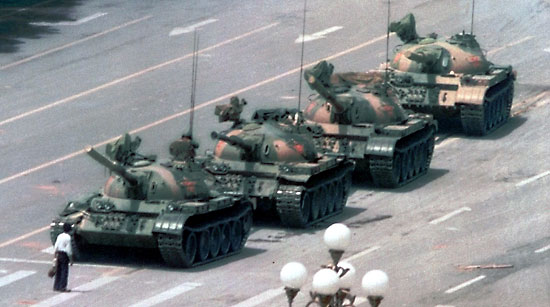In a recent New Yorker’s article, “Small Change: Why the revolution will not be tweeted,” Malcolm Gladwell discusses the role of new media in social movements. Gladwell writes that new social media are a bad fit for civil resistance movements, especially those that involve personal high risk and long-term commitment. New media are a good tool for weak-tie, loosely organized networks while social revolutions require centralized and tightly organized groups.
In an insightful post on his blog iRevolution, Patrick Meier, director of Ushahidi (and much more) replies with a yes and yes: yes, new digital technologies don’t work without understanding the practices of civil resistance, and yes, they can be very effective in making the practices of civil resistance more efficient and in increasing their reach. New media may not be the most effective way to recruit people into high-risk social movements, but they are a very good tool when it comes to sharing and disseminating information.
I agree with Patrick Meier: new digital media are essential to social movements. But something else in Gladwell’s article has caught my attention: the role of strong-ties in creating and maintaining powerful civil resistance movements and the inadequacy of new social media in creating and maintaining strong social ties.
When I moved to the United States, I was puzzled by the speed at which a crowd gathered for an event dissipates as soon as the event ends. I remember going to a packed concert in Eugene, OR and being shocked to see that about 2 minutes after the end of the concert nothing more than empty bottles and random trash was left in the field. In the US, I realized, the concert was the only reason to gather. In Italy the gathering itself would have been as important as the concert; people would have stayed to meet, chat, and hang out.

Almost exactly 2 years ago, I volunteered to help with the Barack Obama’s presidential campaign. For about a month I worked, ate, and drank way too much coffee with a group of extraordinarily motivated activists. We shared the same space 16-18 hours a day, and together we did unpleasant things such as phone banking and canvassing in sometimes hostile territory. The morning after Obama was elected, the campaign office was dismantled and all the activists who were not local, which were the majority, left.
A huge opportunity was missed that day. The social capital of that experience, that unique bond that is created when people get together to accomplish something they strongly believe in and they succeed, was lost. Everybody went back to their life, and we were again on our own. [As an aside, FB did not succeed in keeping those connections going, with perhaps the exception of people who already knew each other. ]
And here is my first question: how do we create and maintain strong ties around ideas and activism?
Gladwell makes the point that new social media alone cannot create strong social ties. And that strong ties are required to motivate people to take high personal risks in the name of a cause:
What makes people capable of this kind of activism? The Stanford sociologist Doug McAdam compared the Freedom Summer dropouts with the participants who stayed, and discovered that the key difference wasn’t, as might be expected, ideological fervor. “All of the applicants—participants and withdrawals alike—emerge as highly committed, articulate supporters of the goals and values of the summer program,” he concluded. What mattered more was an applicant’s degree of personal connection to the civil-rights movement. All the volunteers were required to provide a list of personal contacts—the people they wanted kept apprised of their activities—and participants were far more likely than dropouts to have close friends who were also going to Mississippi. High-risk activism, McAdam concluded, is a “strong-tie” phenomenon.
I don’t believe that movements are magically created when like-minded people suddenly decide to come together. There is a long gestation period in which ideas and strategies are born and refined, and they become real through the practice of social sharing.
Ideas are not just data or information that can be spread through a tweet or SMS. Ideas are generated, developed, and spread through discussions, persuasion, influence and personal experience. And somewhere during the process some strong ties are born.
Today, where is the space for this type of communication, idea generation and vetting? Can this space just be just virtual? I suspect not, but I’d like to hear what you think.
Appendix: Things we used to communicate
Social movements have always used all the communication tools at their disposal. Patrick Meier points to a Global Post article, “How to run a protest without Twitter,” which provide examples of communication in pre-Twitter social movements. Sometimes the communication tools chosen are a good match with the message that needs to be communicated, sometimes they are the only available tools.
The Global Post article brought back lots of old memories. For example, the weekly dazibaos, or big-character posters (we used to call them “tazebao”) that we used to write with color markers when I was in high school, or the tightly typed, no-margin, 2-sided flyers we used to hand out (I wonder how different the student movements of the 70s and 80s in Italy would have been, had they relied on 140 characters tweets instead of those lengthy position documents).
Those hand-written posters and flyers were both a tool of political communication and of personal expression.

In 1990, several Italian universities were occupied for months by a student movement know as La Pantera (The Panther). The main tool of communication and coordination between cities was the fax. The fax worked well to send out the 20-page documents summarizing the movement’s analysis of the political and social situation of the period (which was the outcome of hours and hours of discussion in small groups), but local communications and coordination was done in person or through posters and flyers.
